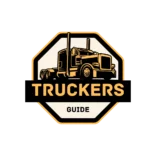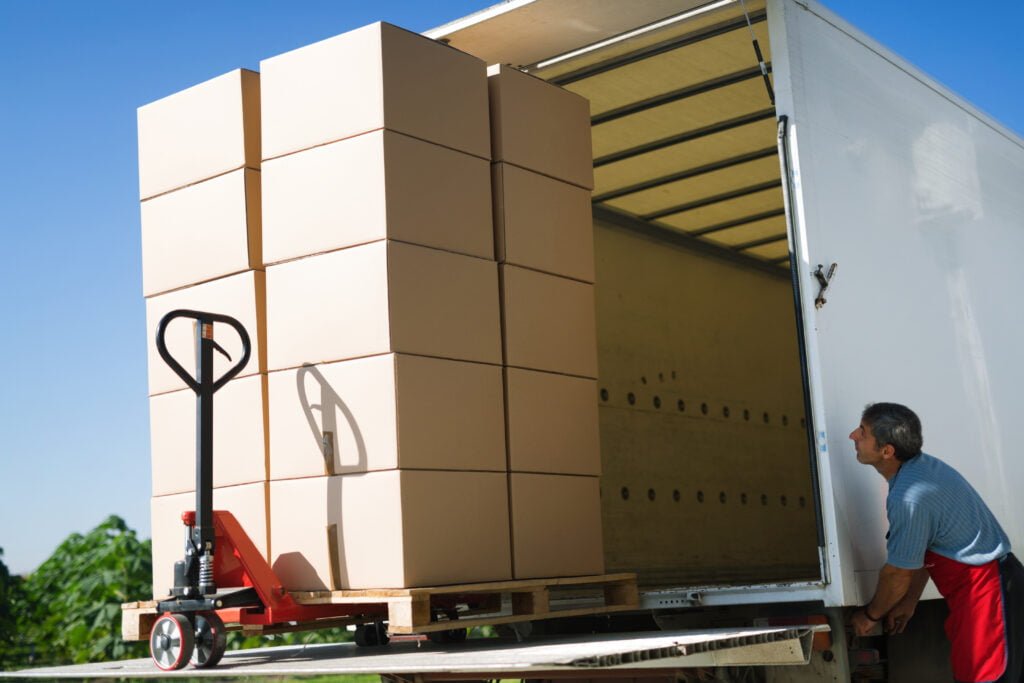Starting your own trucking business? Obtaining a DOT number and MC authority is one of the first—and most important—steps to ensure you are rolling legally. Whether you’re an owner-operator, fleet owner, or about to launch your authority, we’ll walk you through every piece of the process like you’re sitting across the booth at a truck stop diner.
This guide cuts through the red tape and provides you with clear instructions on what to do, when to do it, and how to stay compliant once you’re on the road.
If you are starting your Trucking Business, you can contact us for dispatch services. We also provide our own authority if you don’t have documents
Table of Contents

What Is a DOT Number and Why Do You Need One?
Understanding the role of the Department of Transportation (DOT)
The DOT number is like your truck’s fingerprint—issued by the Federal Motor Carrier Safety Administration (FMCSA), it identifies your vehicle during inspections, compliance checks, audits, and crash investigations.
When a DOT number is legally required
You need a DOT number if you:
- Operate a vehicle over 10,000 lbs (GVWR)
- Transport hazardous materials
- Cross state lines (interstate commerce)
- Are you a for-hire carrier transporting passengers or freight
Intrastate vs Interstate requirements
If you only drive within one state, check local rules—some states (like Texas and California) require DOT numbers for intrastate carriers, too.
What Is an MC Authority and Who Needs It?
What is Motor Carrier Authority in plain English?
MC authority is your permission slip from FMCSA to haul loads-for-hire across state lines.
When the MC authority becomes mandatory
You need it if you plan to:
- Haul loads that don’t belong to you for payment
- Operate as a for-hire carrier in interstate commerce.
Examples of carriers who need both DOT and MC
- Freight brokers
- Long-haul carriers
- Owner-operators under their authority
DOT vs MC: What’s the Real Difference?
| Feature | DOT Number | MC Authority |
| Purpose | Safety tracking | Operating authority to haul for-hire |
| Who needs it? | Most commercial vehicles | For-hire carriers crossing state lines |
| Cost | Free | $300 (non-refundable) |
| Issued by | FMCSA | FMCSA |
| Linked with insurance? | Yes | Yes |
Final Line: DOT is about safety. MC is about permission to get paid.
Before You Apply: Are You Eligible?
Business structure matters
Before applying, establish your business as:
- LLC
- Sole proprietorship
- Corporation
This ensures you’re legally ready for contracts, insurance, and taxes.
Insurance and financial readiness
You’ll need liability and cargo insurance on file with FMCSA before authority is granted.
Quick readiness checklist
✔ Legal business entity
✔ EIN (Employer Identification Number)
✔ Business bank account
✔ CDL (if driving yourself)
✔ DOT-compliant vehicle
How to Apply for a DOT Number? Step-by-Step:
Step 1: Create an account on FMCSA’s URS (Unified Registration System)

Go to https://www.fmcsa.dot.gov/ and set up your account.
Step 2: Choose your operation classification

You’ll choose from options like for-hire, private carrier, or exempt for-hire.
Step 3: Complete the MCS-150 Form

This form collects info about your vehicle, business, and operations.
Step 4: Submit and wait
You’ll receive your DOT number immediately, but that doesn’t mean you’re cleared to operate just yet.
Getting Your MC Authority: The Application Process
Step 1: File the OP-1 form through URS
Select the operating authority type you need (e.g., motor carrier of property).
Step 2: Pay the $300 application fee
Non-refundable. Per authority type.
Step 3: Wait for your docket number
You’ll get this number while your application is under review.
Step 4: Complete additional filings (insurance, BOC-3)
You have 21 days from the application date to file insurance and BOC-3.
Don’t Skip This: BOC-3 Filing (Designation of Process Agent)
What is a BOC-3?
A BOC-3 designates a legal agent in every state to accept court papers on your behalf.
How to file it
Use a BOC-3 filing service (required by FMCSA). Costs typically range from $25 to $50.
It must be filed electronically—paper forms are not accepted.
Insurance Requirements: What You’ll Need to Carry
Minimum FMCSA insurance requirements
- $750,000 to $5,000,000 liability (depends on freight type)
- $5,000 cargo insurance (though not required by FMCSA, brokers usually demand it)
Common policies
- Primary liability
- Cargo insurance
- Physical damage
- Bobtail insurance
Tips for lower premiums
- Clean driving record
- Use ELD and GPS tracking.
- Newer equipment
- Fleet safety plan
How Long Does It Take to Get a DOT Number and MC Authority?
Typical timeline:
| Task | Time Needed |
| DOT Number Issuance | Instantly |
| MC Authority Application Review | ~21 days |
| Insurance & BOC-3 Approval | 2–3 weeks (avg.) |
| Total Time to Operate Legally | 3–4 weeks (realistically) |
Delays can happen if:
- Insurance is not filed on time
- BOC-3 is missing
- Paperwork errors
Do You Need a UCR (Unified Carrier Registration)?
What is UCR?
UCR is an annual registration fee based on fleet size.
Applies to:
All carriers operating interstate (with or without MC authority).
Annual UCR Fee Table:
| Fleet Size | UCR Fee (Approx.) |
| 0–2 | $41 |
| 3–5 | $121 |
| 6–20 | $242 |
Drug and Alcohol Testing Program Compliance
Who must enroll?
All CDL drivers operating vehicles over 26,000 lbs or transporting hazmat.
Requirements include:
- Pre-employment drug test
- Random testing
- Return-to-duty and follow-up testing (if applicable)
Join a consortium if you’re a solo operator—costs around $100–$150 per year.
Safety Audit: What Happens After Approval?
New Entrant Safety Audit
Within 12 months of MC activation, the FMCSA will conduct an audit of your business.
They’ll check:
- Driver qualification files
- Vehicle maintenance records
- Drug/alcohol testing compliance
- Hours of service logs
Tip: Keep everything clean and organized from day one.
Getting Your IFTA and IRP for Multi-State Operation
What is IFTA?
The International Fuel Tax Agreement simplifies reporting for fuel tax across state lines.
What is IRP?
The International Registration Plan provides you with apportioned license plates.
How to register:
- Apply through your home state’s DMV or motor carrier office
- Provide mileage estimates for each state.
File quarterly reports or face significant penalties.
Common Mistakes That Can Delay or Deny Your Application
- Leaving blanks or typos in MCS-150 or OP-1
- Not filing BOC-3 or insurance in time.
- Using incorrect business names or addresses
Triple-check everything before you submit.
What to Do If Your Application Is Rejected
Why applications get denied:
- Wrong classification
- Missing insurance
- Unpaid fees
Fix it fast:
- Log in to your FMCSA portal
- Correct the issue
- Refile if needed
Still stuck?
Consider hiring a registration expert—it’s well worth it to avoid weeks of downtime.
How Much Does It Cost to Get a DOT Number and MC Authority?
| Item | Estimated Cost |
| DOT Number | Free |
| MC Authority Application | $300 |
| BOC-3 Filing | $25–$50 |
| UCR Registration | $41–$1,200+ |
| Insurance Premium | $5,000–$12,000+/yr |
| Drug Testing Consortium | $100–$150/year |
Tip: Set aside $3,000–$5,000 to cover your startup registration and early compliance costs.
Can You Apply for DOT and MC Authority on Your Own?
Yes, but…
It’s doable, but it can be confusing if you’re new to the process.
Pros of DIY:
- Saves on fees
- Full control
Cons of DIY:
- Easy to make costly errors
- Slower approval if you miss something
Third-party services charge $300–$600 but handle everything for you.
Staying Compliant After You’re Approved
- Update MCS-150 every 2 years (even if nothing changes)
- Renew UCR annually
- Maintain active insurance and BOC-3.
- Keep accurate HOS logs, maintenance records, and driver files.
Frequently Asked Questions (FAQs)
Do I need a DOT number if I only operate in one state?
It depends on the state. Some states require a DOT number for intrastate operations. Check with your state’s Department of Transportation to be sure.
Can I operate right after I get my DOT number?
Not if you also need MC authority. You can only start operating after your MC authority is fully active, insurance has been filed, and the 21-day protest period has ended.
How do I know if I need MC authority?
If you’re hauling freight for-hire across state lines, you need MC authority. Private carriers who haul their goods may only need a DOT number.
Is the DOT number application free?
Yes, the DOT number is free, but MC authority and other requirements (like BOC-3 and UCR) do cost money.
Can I use someone else’s authority to run my truck?
Yes, you can lease onto a carrier’s existing authority, but you must follow their rules and may earn less per load.
How often do I have to update my DOT information?
At least every two years, use the MCS-150 form—even if nothing changes. The FMCSA can deactivate your number if you fail to update it within the required timeframe.
What is the New Entrant Safety Audit, and is it serious?
Yes. Within your first 12 months, the FMCSA will conduct an audit of your operations. If you’re not compliant, your authority may be revoked.
What if my application gets rejected? Can I apply again?
Yes. Most issues are fixable. You can correct and resubmit through the FMCSA portal or get help from a third-party service.
How much insurance do I need to activate my MC authority?
At least $750,000 in liability, but most brokers and shippers require $1 million. You’ll also need cargo insurance for most loads.
Do I need to join a drug testing consortium if I’m a solo driver?
Yes. FMCSA requires even single-driver companies to enroll in a consortium for random testing compliance.
Conclusion: Your Road to DOT and MC Authority Starts Here
Obtaining your DOT number and MC authority is the first significant step toward becoming your boss in the trucking industry. It might feel overwhelming at first, but once you break it down, the process is straightforward and entirely within your reach.
From filing the MCS-150 to submitting your BOC-3 and insurance, every step brings you closer to hauling legally and profitably. Whether you’re launching a one-truck operation or building a growing fleet, staying compliant with FMCSA regulations ensures your business stays on the road long-term.
Remember:
✔ Apply smart
✔ File everything on time
✔ Keep your records clean
✔ Invest in compliance tools
If you’re ready to take action under your authority, now’s the time to do so. With your DOT number and MC authority in hand, you’re not just driving freight—you’re driving your future.
Got questions about starting your own trucking company? Drop them in the comments or check out our other guides for UCR, IFTA, IRP, and more.
Stay safe, stay compliant, and keep on trucking


